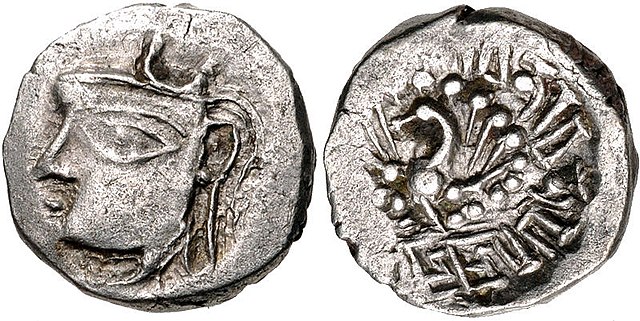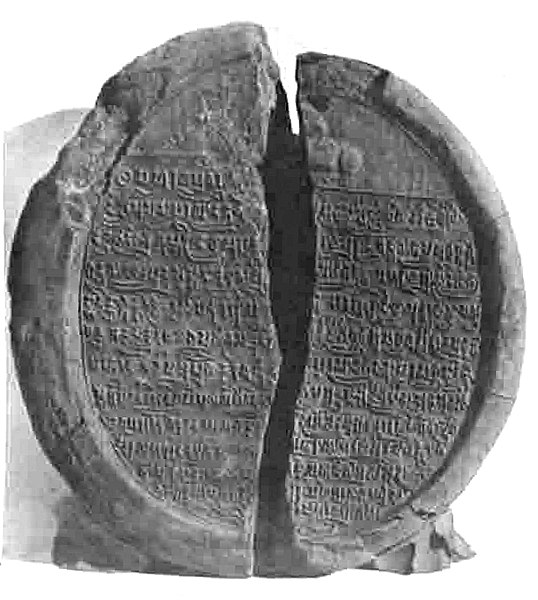The Pushyabhuti dynasty, also known as the Vardhana dynasty, was the ruling dynasty of the Kingdom of Thanesar and the Kannauj Empire in northern India during the 6th and 7th centuries. The dynasty reached its zenith under its last ruler Harsha Vardhana, whose empire covered much of north and north-western India, extending till Kamarupa in the east and Narmada River in the south. The dynasty initially ruled from Sthanveshvara, but Harsha eventually made Kanyakubja his capital, from where he ruled until 647 CE.
Pushyabhuti dynasty
Female Bust, Gwalior, Madhy Pradesh. Vardhana dynasty, 7th century CE.
Seal of Harshavardhana found in Nalanda.
Lion Capital, Vardhana dynasty, Gwalior, 7th century CE.
Harshavardhana was the Emperor of Kannauj of the Pushyabhuti dynasty who ruled northern India from year 606 to 647 CE. He was the son of Prabhakaravardhana who had defeated the Alchon Hun invaders, and the younger brother of Rajyavardhana, a king of Thanesar, present-day Haryana.
Coin of Harshavardhana, c. 606–647 CE.
Palace ruins at "Harsh ka tila" mound area spread over 1 km
Seal of Harshavardhana found in Nalanda.
"King Harsha pays homage to Buddha", a 20th-century artist's imagination






